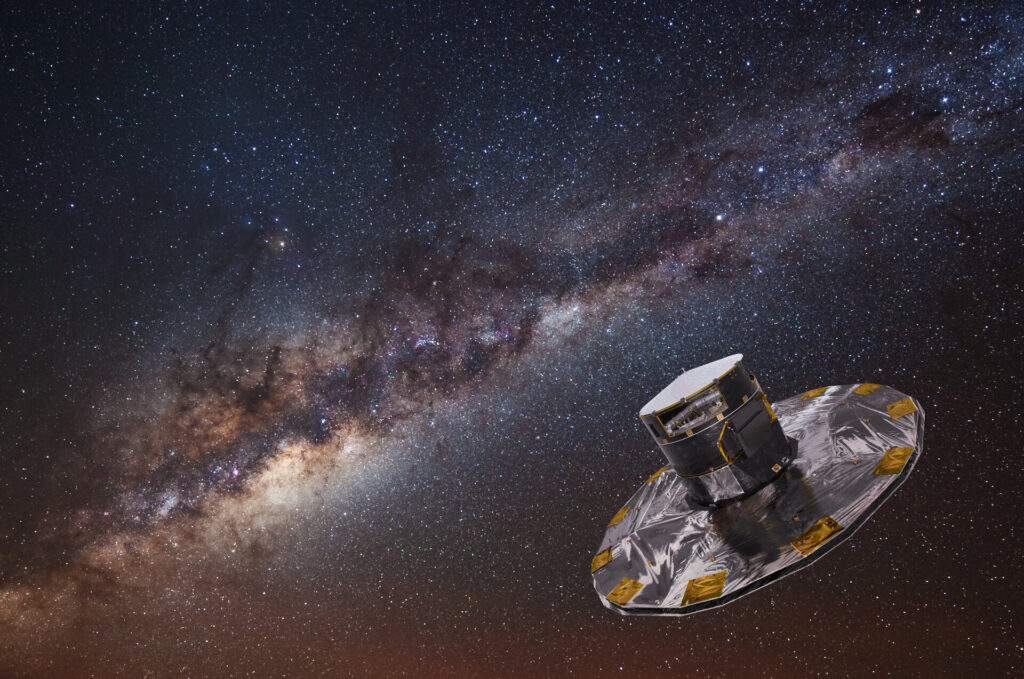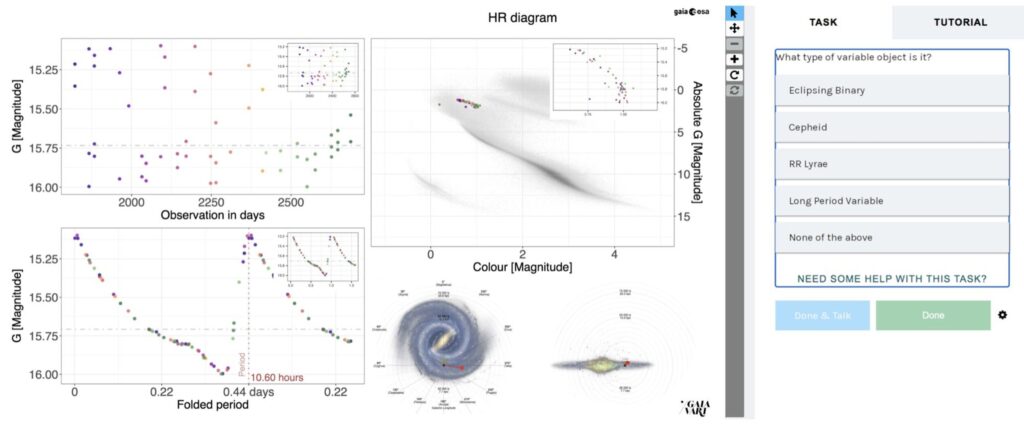ESA has announced the launch of a new citizen science project. Its participants will be engaged in the classification of variable stars captured on the images of the Gaia Space Telescope.
Problem of classification of variable stars
Over a decade of operation, the Gaia telescope has collected unprecedented amounts of data on the stellar population of the Milky Way. In particular, it measured the position, direction of motion and spectral class of more than 1.8 billion luminaries. This made it possible to create the largest and most detailed three-dimensional maps of our galaxy.

Gaia data allowed us to look into the Milky Way’s past and find out that 10 billion years ago it merged with another galaxy. And its observations of the Andromeda galaxy made it possible to clarify the mechanism of its future collision with the Milky Way.
During its mission, Gaia also managed to detect about 10.5 million objects that change brightness. These are eclipsed binary systems, cepheids, RR Lyrae-type variables, and long-period variables. The variability of their brilliance is one of the most important tools in the study of the Universe. Its research contributes to a wide range of fields of astrophysics and allows us to understand the internal composition of stars and detect extrasolar planets, as well as to reveal the structure of galaxies and detect dark matter.
Despite the fact that machine learning algorithms are already widely used in modern astronomy, they are not an ideal tool and often make mistakes in classification. Therefore, scientists still resort to manual data verification, which allows to correct inaccuracies and make changes to the algorithms. The problem is that the amount of information collected by Gaia is too large for specialists to check it.
Gaia Vari Project
To solve this problem, the Gaia mission staff announced the launch of the Gaia Vari Civil Science project. Its participants will view the data collected by the telescope on changes in the brightness of stars and then classify them.

Gaia Vari is based on the Zooniverse platform. To participate in the project, you need to click on the following link.
According to https://www.esa.int
Follow us on Twitter to get the most interesting space news in time
https://twitter.com/ust_magazine

